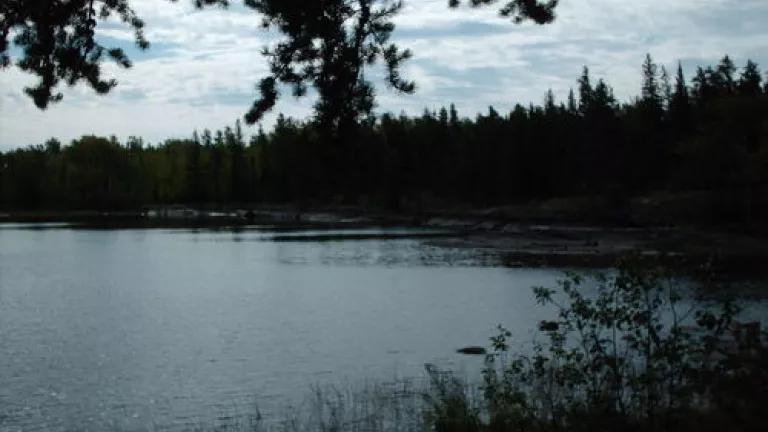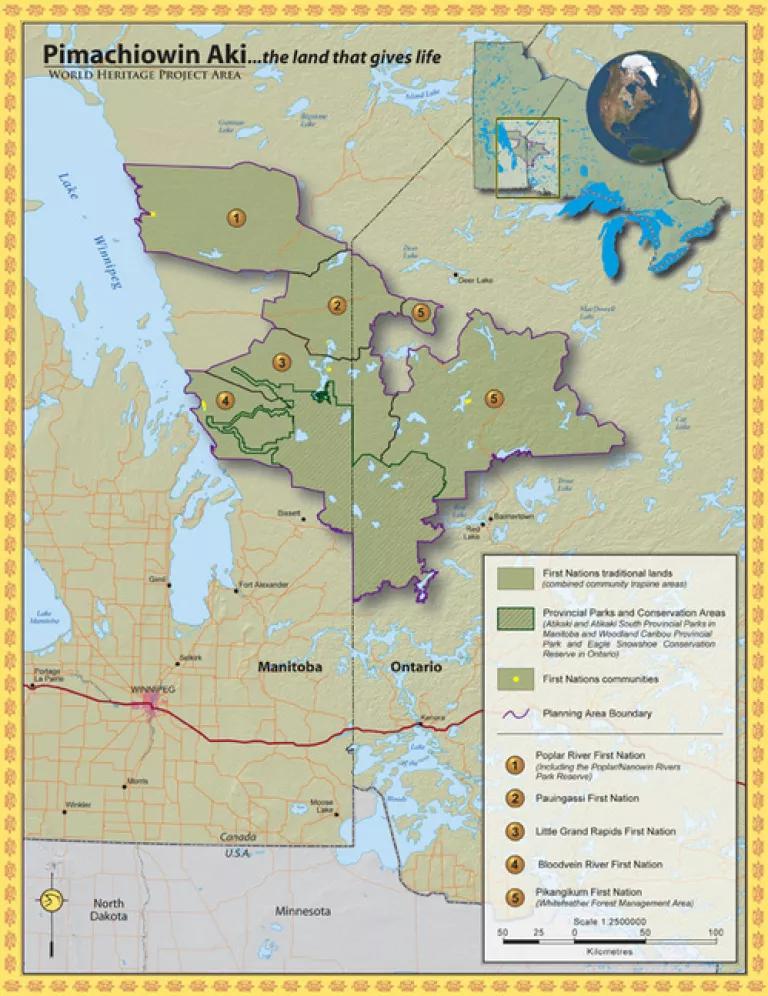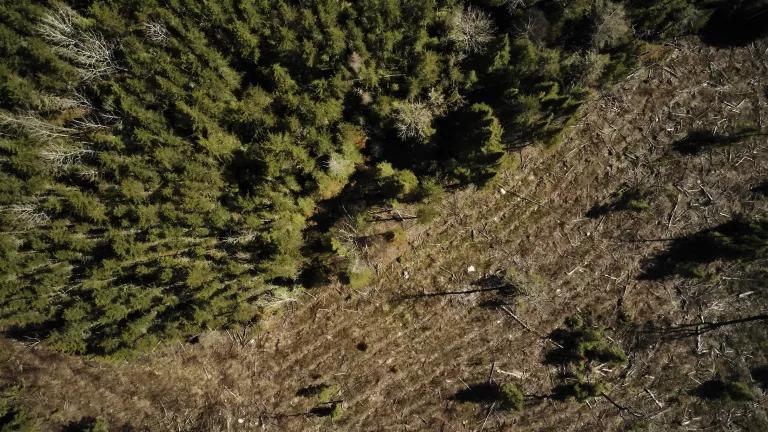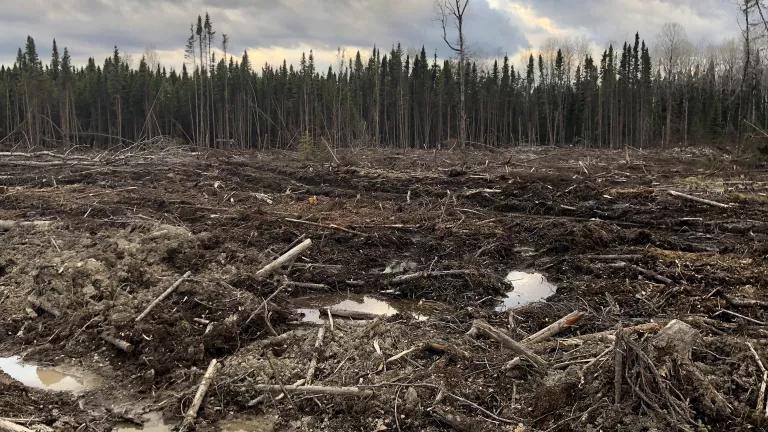
So often, we hear of commitments to protect wilderness areas and the final, legal protection then takes years to realize. Today, the Canadian province of Manitoba and Poplar River First Nation announced the final, legal confirmation of a new protected area, the size of Yellowstone National Park. This new protected area was proposed and will be managed by the First Nation that has lived on its lands for thousands of years. It means conservation of critical Boreal forest habitat for migratory birds, caribou and bear. And it is the first step in achieving a new World Heritage Site in this region of almost 10 million acres.
NRDC congratulates the leadership and community of Poplar River First Nation and the people of Manitoba and the Manitoba Government for this incredible conservation of nearly two million acres of the endangered heart of the Boreal Forest. And we are happy that NRDC was able to play a role in advocating and achieving protection of this beautiful and culturally important land.
For over seven years, NRDC and our partners in Canada have been calling on Manitoba to honor the right of the Poplar River First Nation to manage its traditional lands in the Boreal Forest and to keep out unwanted industrialization, such as hydropower development, forestry and mining. We worked in close partnership with Poplar River First Nation to support their land use planning process and their efforts to have their conservation goals legally recognized. We applauded the support shown along the way by the Manitoba government when it re-routed a proposed hydropower transmission line outside of this region, when it supported the Poplar River land use planning process and when it supported the broader goal of the proposed Pimachiowin Aki World Heritage Site in the region.
Now Manitoba has taken the critical step of legally confirming the protections set out in Poplar River First Nation’s Asatiwisipe Aki Management Plan that will maintain the natural habitat of the land and water and preserve the traditional culture and use of the land by local inhabitants. The plan manages for wilderness values -- protecting vital populations of woodland caribou, wolves and millions of migratory songbirds -- while ensuring that the First Nations can manage these dense woods for sustainable community development.
Poplar River First Nation is a community with a deep conservation ethic and many people in their leadership and community have contributed to the conservation process over the years. I travelled several times to Poplar River and have come to love this wild landscape. The land and the people especially touched my heart when my daughter and I were invited to participate in a healing camp in a magical place of birdsong, water, wind in the poplar leaves and the thumping of beaver tails.
For thousands of years, the people of Poplar River First Nation have lived on their traditional lands and waters on the east side of Lake Winnipeg in Manitoba, Canada. They have lived by hunting and fishing, gathering food and medicines while sustaining the health of their environment. The traditional territories of Poplar River First Nation extend east from the Lake Winnipeg shoreline almost to the Ontario border. The landscape of granite outcrops, lakes, rivers, and marshes interspersed with pine and poplar forests is undisturbed by industrial development. Woodland caribou, moose, bear and wolves depend on these wide boreal forest expanses. The elusive great gray owl is a year-round resident, while North America’s waterfowl and songbirds come every spring to nest in the forests and wetlands.
Poplar River First Nation’s work to conserve a globally important intact boreal forest region of approximately two million acres in the face of encroaching industrial development stands as a testament to that community’s commitment to its land. Despite initial resistance from industry and government, the Poplar River community proposed permanent protection for approximately 90 percent of its traditional lands. In 2009, Manitoba enacted a new law, the East Side Traditional Lands Planning and Special Protected Areas Act (Bill 6). The Bill puts in place a mechanism for legal confirmation of land use planning done by First Nations and aboriginal communities on the east side of Lake Winnipeg on their traditional territories. The regulation confirming Poplar River First Nation’s land use plan was just signed by the Manitoba Government. The regulation confirms the protections in Poplar River First Nation’s Asatiwisipe Aki Management Plan and prohibits logging, mining or the development of oil, petroleum, natural gas or hydro-electric power except for non-industrial community purposes in a small community resource management area.
Since 2004, when NRDC declared the Heart of the Boreal Forest in Manitoba and Ontario as a BioGem, we have worked closely with Poplar River First Nation to help shine an international spotlight on the ecological and cultural importance of this region. Over the years, NRDC BioGems Defenders sent hundreds of thousands of emails to the Manitoba and Canadian Federal governments for protection of this region, support for Poplar River First Nation’s conservation goals, and support for a World Heritage Site that will mean protection for the broader region of approximately 10 million acres and involves neighboring First Nations that are currently working on their land use plans.
NRDC members and supporters should feel very proud of this new protected area and can send thanks and congratulations to Manitoba. It is a testament to how voices from many individuals can foster an understanding of the global importance of an area. The Poplar River protected area is a strong example of the importance of First Nations-led conservation planning, and it is an important step towards achieving the proposed World Heritage Site. It is good to have something to celebrate.
In the map below, the Poplar River protected area is number (1). The other areas will be part of the proposed World Heritage Site.





